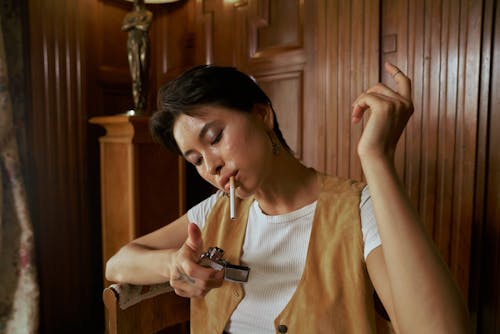
Introduction
Luxury clothing transcends mere fabric and design; it embodies a lifestyle of opulence, exclusivity, and impeccable craftsmanship. From haute couture to bespoke tailoring, luxury garments have a storied history rooted in tradition and innovation. This article delves into the world of luxury clothing, exploring its evolution, the craftsmanship behind its creation, its cultural significance, and its enduring appeal.
The Essence of Luxury Clothing
- Defining Luxury
- Beyond Materialism: Luxury clothing is more than expensive fabrics and designer labels; it represents superior quality, meticulous attention to detail, and exceptional craftsmanship.
- Exclusivity: Limited production runs, bespoke tailoring, and rare materials distinguish luxury garments from mass-produced fashion.
- Historical Roots
- Origins of Haute Couture: The concept of haute couture emerged in 19th-century Paris with Charles Frederick Worth. It introduced made-to-measure garments for wealthy clients, setting the foundation for luxury fashion.
- Evolution: From royal commissions to designer ateliers, luxury clothing has evolved with societal changes, reflecting cultural shifts and technological advancements.
The Craftsmanship Behind Luxury Garments
- Artisanal Excellence
- Bespoke Tailoring: Master tailors create bespoke garments that are individually crafted to fit the client’s measurements and preferences. Each piece is a testament to precision and tradition.
- Handcrafted Details: Embroidery, embellishments, and hand-sewn finishes showcase artisanal skills passed down through generations.
- Materials of Distinction
- Luxurious Fabrics: Silk, cashmere, fine wool, and rare textiles sourced from around the world define luxury clothing. These materials offer unparalleled comfort, durability, and aesthetic appeal.
- Exotic Skins and Precious Metals: High-end fashion often incorporates exotic skins like alligator and python, as well as embellishments with gold thread or Swarovski crystals.
Icons of Luxury Fashion
- Chanel and the Little Black Dress
- Timeless Elegance: Coco Chanel revolutionized women’s fashion with the little black dress, a symbol of understated sophistication and versatility.
- Iconic Pieces: Chanel’s tweed suits, quilted handbags, and pearls have become synonymous with classic luxury and enduring style.
- Italian Mastery: Gucci, Prada, and Versace
- Italian Heritage: Italian fashion houses like Gucci, Prada, and Versace exemplify luxury with bold designs, impeccable tailoring, and a passion for craftsmanship.
- Global Influence: From Milan runways to Hollywood red carpets, these brands set trends and define modern luxury with their distinct aesthetics.
The Role of Haute Couture
- Exclusive Design
- High Fashion: Haute couture collections are created for elite clientele who seek exclusivity and personalized service. Each garment is meticulously crafted with unique design elements and luxurious materials.
- Cultural Influence: Haute couture sets trends and inspires ready-to-wear collections, influencing fashion beyond the runway.
- Legendary Couturiers
- Dior’s Legacy: Christian Dior’s New Look and subsequent innovations transformed haute couture with voluminous skirts, nipped waists, and intricate details.
- Yves Saint Laurent: Known for his rebellious spirit and modern designs, Yves Saint Laurent redefined women’s fashion with the introduction of Le Smoking tuxedo suit.
The Global Appeal of Luxury Brands
- Globalization and Market Expansion
- Emerging Markets: Luxury brands cater to affluent consumers in emerging markets like China, Russia, and the Middle East. These regions drive growth in the luxury sector and influence global fashion trends.
- Brand Presence: Flagship stores, exclusive boutiques, and digital platforms enhance brand visibility and accessibility worldwide.
- Brand Heritage and Prestige
- Legacy and Tradition: Luxury brands uphold a legacy of excellence, innovation, and heritage. Their storied histories and iconic designs resonate with discerning consumers seeking quality and prestige.
- Brand Loyalty: The allure of luxury clothing extends beyond aesthetics; it fosters brand loyalty and a sense of belonging to an exclusive community of connoisseurs.
Sustainability in Luxury Fashion
- Ethical Practices
- Environmental Responsibility: Luxury brands are increasingly adopting sustainable practices to minimize environmental impact. This includes ethical sourcing, eco-friendly production methods, and reducing carbon footprint.
- Longevity and Durability: Investing in quality craftsmanship and timeless designs promotes longevity, reducing the need for frequent purchases and contributing to sustainable fashion consumption.
- Innovation and Future Trends
- Technological Advancements: Luxury fashion embraces technology with digital innovations, virtual reality experiences, and personalized shopping platforms.
- Adapting to Change: The future of luxury clothing lies in innovation, sustainability, and meeting the evolving expectations of global consumers.
Cultural Influence and Expression
- Fashion as Art
- Exhibitions and Museums: Luxury clothing is celebrated as wearable art in exhibitions at museums like The Met in New York and the Victoria and Albert Museum in London.
- Cultural Icons: Celebrities, royals, and influencers showcase luxury fashion on red carpets and social media, influencing global trends and consumer behavior.
- Fashion Education and Appreciation
- Academic Programs: Fashion schools and institutions offer programs in luxury management, design, and marketing, nurturing future leaders in the industry.
- Consumer Education: Understanding craftsmanship, design techniques, and brand heritage enhances consumer appreciation and investment in luxury clothing.

Conclusion
Luxury clothing embodies the pinnacle of craftsmanship, innovation, and cultural influence in the fashion industry. From the ateliers of haute couture to the global reach of luxury brands, each garment tells a story of artistry, heritage, and timeless elegance. As fashion evolves with technological advancements and sustainability initiatives, luxury clothing continues to captivate and inspire generations of discerning consumers. Its enduring allure lies in the craftsmanship, exclusivity, and transformative power to elevate personal style and celebrate the art of dressing. Through its rich history and contemporary innovations, luxury clothing remains a testament to the enduring legacy of creativity, craftsmanship, and the pursuit of beauty in fashion.














